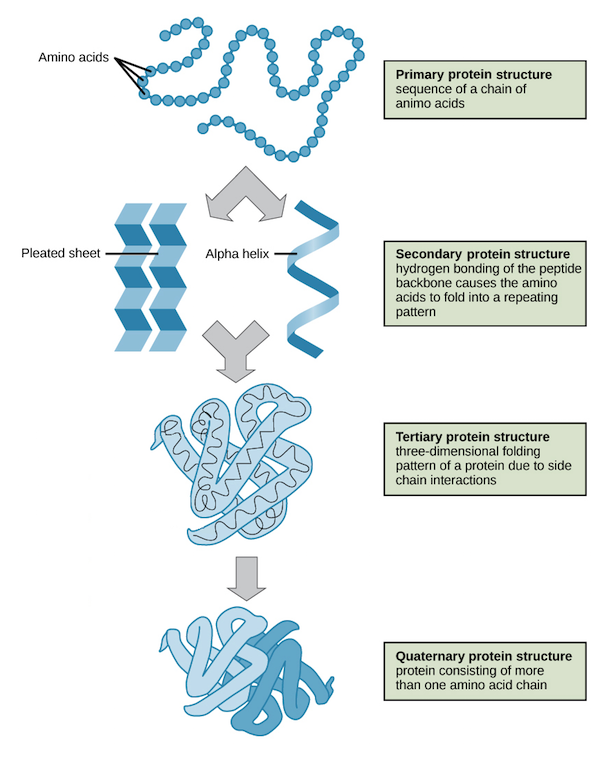



Protein structures are made by condensation of amino acids forming peptide bonds. The sequence of amino acids in a protein is called its primary structure. The secondary structure is determined by the dihedral angles of the peptide bonds, the tertiary structure by the folding of protein chains in space. Association of folded polypeptide molecules to complex functional proteins results in quaternary structure.
1) Primary Structure : The primary structure of protein
is the hierarchy's basic level, and is the particular linear
sequence of amino acids comprising one polypeptide chain.
2) Secondary structure : The next level up from
the primary structure, and is the regular folding of regions
into specific structural patterns within one polypeptide chain.
Hydrogen bonds between the carbonyl oxygen and the peptide bond
amide hydrogen are normally held together by secondary
structures.
3) Tertiary structure It is the next
level up from the secondary structure, and is the particular
three-dimensional arrangement of all the amino acids in a single
polypeptide chain. This structure is usually conformational,
native, and active, and is held together by multiple noncovalent
interactions.
4) Quaternary structure It is the
next 'step up' between two or more polypeptide chains from the
tertiary structure and is the specific spatial arrangement and
interactions.
